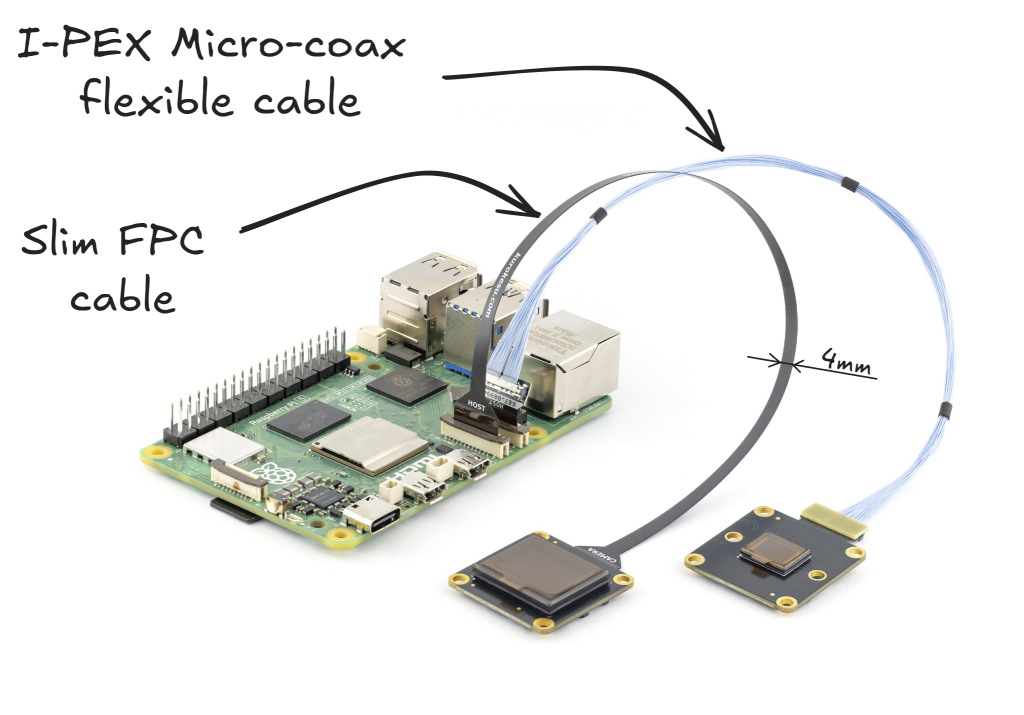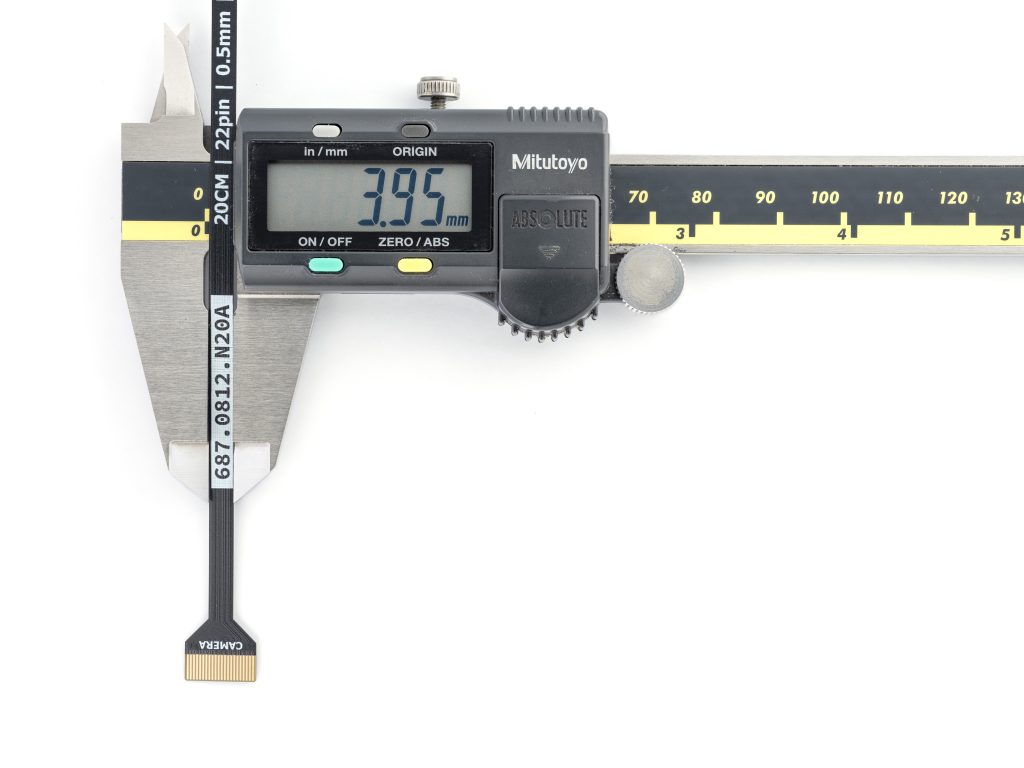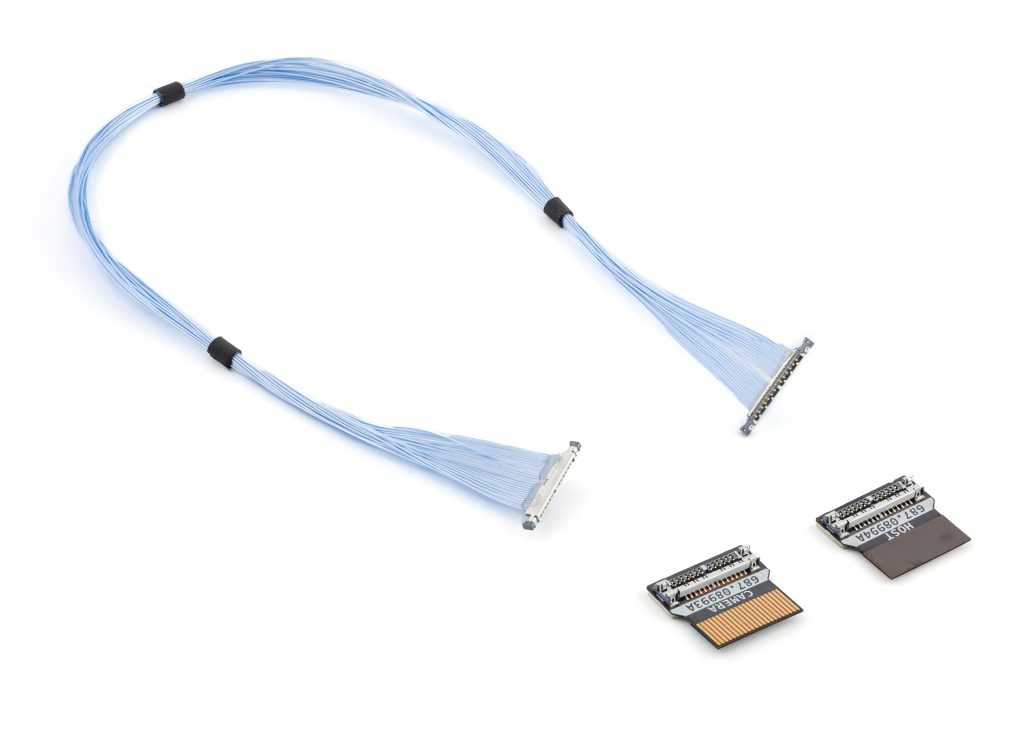New Slim FPC and Micro-Coax Cables for CSI-2 Cameras
While there are countless MIPI CSI-2 camera cables, the most common ones are 15-pin / 1mm pitch or 22-pin / 0.5mm pitch, compatible with Raspberry Pi and NVIDIA Jetson platforms. Kurokesu cameras use the 22-pin / 0.5mm pitch format with all four CSI-2 lanes routed.
The majority of the market is covered by plain FFC (Flexible Flat Cable) types without a ground plane. Custom impedance-matched cables are becoming more popular, but most are still relatively bulky – the cable body is usually as wide as the connector, and often even wider after the fan-out section.
We have released two new cables designed for situations where flexibility, durability, and space constraints are critical – perfect for compact embedded systems, wearable modules, vision sensors in narrow enclosures, inspection tools, or robotic joints. The Slim FPC uses a 4-layer construction with controlled impedance and dedicated ground layers for superior signal integrity, reduced crosstalk, and reliable high-speed transmission in a cable just 4 mm wide. The Micro-coax I-PEX kit, based on the CABLINE®-UA II family, adds excellent shielding, minimal signal loss, and a slim, low-profile form factor that handles constant motion without degrading performance.

Slim FPC cable
687.0812.N20A is a Kurokesu designed, impedance matched, 4-layer FPC (Flexible Printed Circuit) cable. It is built for applications where every millimeter matters – the width after the fan-out from the connector is just 4 mm while maintaining four differential lanes with proper impedance control.
Unlike generic FFC cables, which can be stiff and fussy about how they’re routed, the Slim FPC is ultra-narrow and far easier to work with in confined spaces. At just 4mm wide after the fan-out, it can be guided through narrow gaps, wrapped around board edges, or shaped to follow the contours without adding bulk. This makes it ideal for robot vision systems where the camera must be mounted in tight mechanical assemblies, as well as inspection cameras, wearable vision modules that need to hug curved surfaces, or handheld instruments where every millimeter counts and cable routing options are otherwise limited.

Micro-coax I-PEX cable
If your camera is in constant motion – such as on a gimbal, robotic arm, or other moving assembly – cable durability becomes the top priority. 687.089MC1A addresses this need using the outstanding I-PEX CABLINE®-UA II 20 cm micro-coaxial cable.
While the best option is always to use matching I-PEX connectors on both the camera and host, in reality, very few off-the-shelf cameras have them. Instead, this kit adapts from a standard 22-pin FFC connector to the I-PEX format, giving you the mechanical benefits of micro-coax while keeping compatibility with common hardware.
The kit comes unassembled. Mating is straightforward (though care is advised), while un-mating requires a special tool. See the I-PEX cable 82068-100B-02-D tutorial for proper handling techniques.

Find them in our store
- 687.0812.N20A – slim FPC cable
- 687.089MC1A – micro-coaxial cable kit